
Poor sleep is like an unwanted companion – it sticks around and can negatively impact your mental health. Sleep difficulties are incredibly common among young people and are often linked with mental health challenges. Research shows that about 70% of young people facing mental health issues experience significant insomnia (a sleep disorder that is characterised by difficulty either falling or staying asleep and is accompanied by daytime impairment; Orchard et al., 2017), largely as a result of delayed body clocks and the pressure of early mornings. Yet effective help for these sleep issues remains sparse.
Evidence supports the effectiveness of Cognitive Behavioural Therapy for Insomnia (CBTi), which targets the psychological roots of insomnia (e.g., anxiety and worry), and is recommended as a first-line treatment (National Institute of Health and Care Excellence, 2021). Studies, like the one highlighted by Jack Barton (2018) on The Mental Elf, highlight the positive impacts of CBTi on sleep in young people aged 12-24 years. However, we still don’t fully understand how well it works for young people with mental health difficulties or whether therapeutic involvement necessitates a qualified therapist. As mental health services for young people are already under-staffed and over-stretched, it is important to learn how we can continue to deliver evidence-based treatment using resources we already have – such as non-expert practitioners like Assistant Psychologists (APs).
Therefore, the current study sought to extend a previous case-series (Rollinson et al., 2021) to examine the feasibility of a modified form of CBTi, specifically tailored for young people (aged 14 to 25 years) and delivered by non-expert practitioners, in a secondary care youth mental health service.
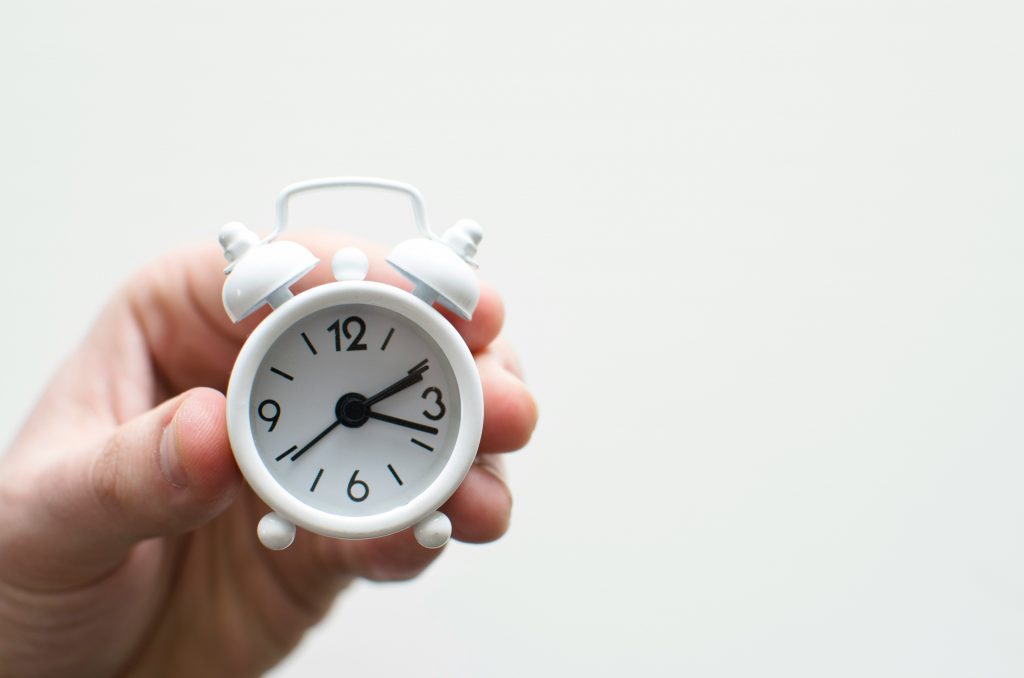
Up to 70% of young people with mental health difficulties report significant symptoms of insomnia. Rollinson et al. (2024) explored whether it is feasible for a CBTi intervention to be delivered to this group of young people by non-expert practitioners within secondary care.
Methods
Participants were service users recruited from within a Youth Mental Health Service in the East of England. Service users were offered the intervention if their sleep difficulties were above the clinical threshold on the Insomnia Severity Index (ISI; >15 for those over 18 years and >9 for those under 18 years; Chung et al., 2011; Morin et al., 2011), present for at least 2 months and if they wanted help with their sleep. Exclusion criteria included acute risk of suicide and/or a primary presentation of psychosis.
Six intervention sessions were offered remotely or face-to-face. Intervention sessions consisted of cognitive and behavioural interventions for insomnia, such as learning to associate the bed with sleep (stimulus control), and relaxation strategies.
A within-subjects design examined self-reported clinical outcomes relating to sleep, psychological distress, and personal goals across four timepoints (baseline, mid-intervention, post-intervention and 1-month post-intervention). Emphasis for this study was placed on feasibility, monitored through accessibility and acceptability.
Results
Feasibility
Service users were mostly female (68.75%) and White (92.5%) with a mean age of 19 years (range 13–25 years). On average, service users who completed the intervention received seven sessions (baseline assessment plus six intervention sessions; range 4–9).
Referral rates were high, with 222 referrals received over 50 weeks of recruitment. Intervention uptake was also high, with 82.82% of initially eligible participants agreeing to take part, and a further 70% completing the intervention (n = 56). Practitioners and service users also self-reported high levels of satisfaction and perceived helpfulness.
Clinical outcomes
The authors calculated the percentage of service users whose clinical threshold fell below the clinical cut-offs at each time-point, and found that:
- At post-intervention (n = 38), 68% no longer met the adult threshold for insomnia (as assessed via the ISI), with 58% maintaining this 1-month post-intervention in a smaller follow-up sample (n = 22/38).
- At baseline (n = 55), 42% scored above the cut-off for ‘severe’ insomnia; this decreased to 12.5% post-intervention and 11% at 1-month post-intervention.
- In the over 18’s, 64.71% scored ‘severe’ or ‘very severe’ on the psychological distress measure (the CORE Outcomes Measure; CORE) at baseline; this dropped to 36.6% post-intervention.
- In the under 18’s, 67% scored in the clinical range on the psychological distress measure (the Revised Child Anxiety and Depression Scale; RCADS), which dropped to 29% post-intervention.
- Progress towards personal goals (as assessed via the Goal Based Outcome measure; GBOM) was seen in 22% of service users who completed the measure at baseline and post-intervention.
Finally, the authors conducted a repeated measures ANOVA to examine the change in outcome measures over time, which found clinical and significant improvements in sleep (n = 53, d = -0.79), psychological distress (CORE: n = 31, d = -0.72; RCADS: n = 18, d = -0.78) and progress towards personal goals (n = 52, d = 2.2. All follow-up tests were significant, except for change in CORE from midpoint to endpoint.
Paired samples t-tests were also conducted on an additional measure of sleep (the Sleep Efficiency Quotient; SEQ) captured only at baseline and post-intervention. These results demonstrated a statistically significant improvement in sleep efficiency from baseline to post-intervention.
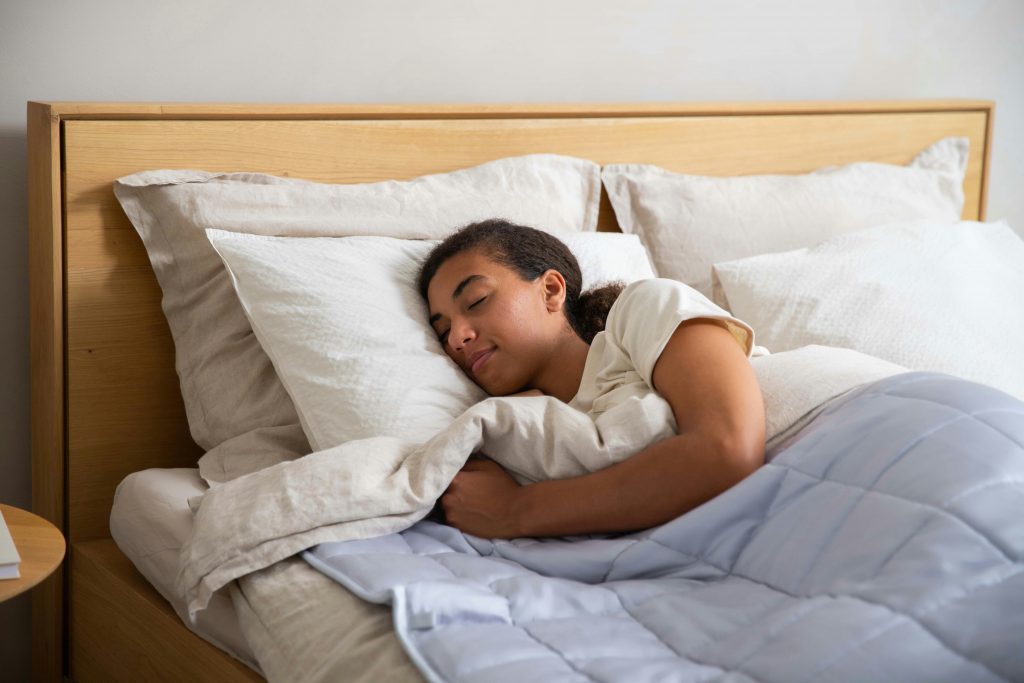
At post-intervention, 68% of service users no longer met the adult threshold for insomnia, and clinical and significant improvements were observed for insomnia symptoms, psychological distress, and progress towards goals over time.
Conclusions
Although this is a non-randomised study with a relatively small sample size, these findings support the feasibility of this adapted CBTi intervention for young people delivered by non-expert practitioners, with improvements seen in insomnia, psychological distress, and progress towards personal goals.
This study also demonstrated significant clinical need, with high rates of poor sleep reported in service users accessing youth mental health services prior to receiving the intervention. As the intervention was delivered by non-expert practitioners, it has great potential to be implemented more broadly across youth mental health services.
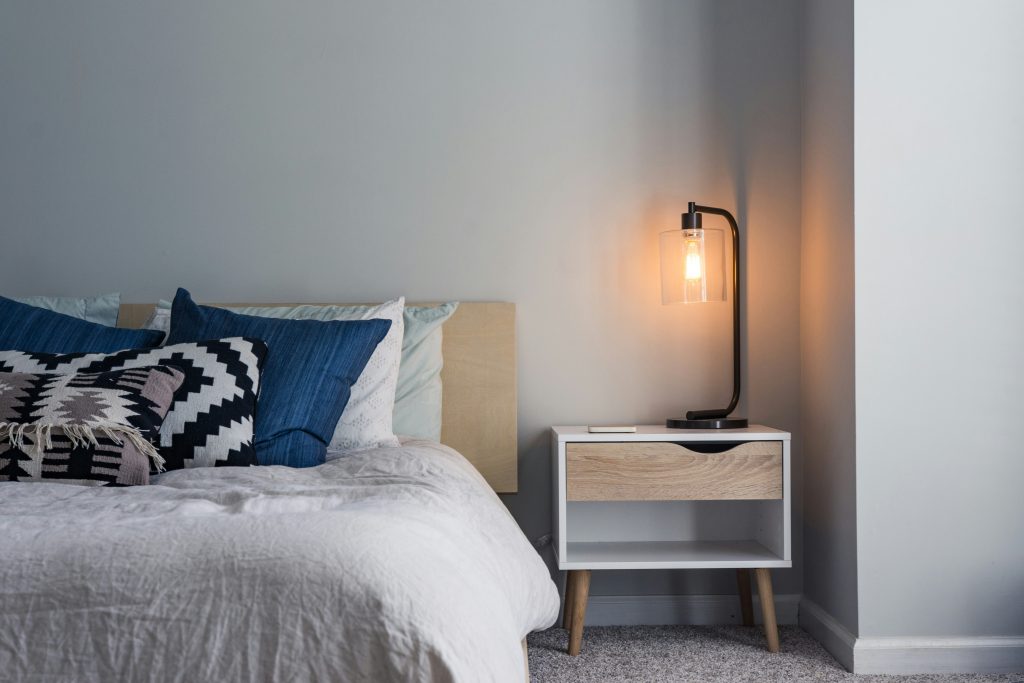
As this adapted CBTi intervention was delivered by non-expert practitioners, it has great potential to be implemented more broadly across youth mental health services, increasing access to care.
Strengths and limitations
This study was the first to evaluate an adapted sleep intervention specifically for young people (aged 14 to 25) and delivered by non-expert practitioners. Service users were also given the option to complete the sessions face-to-face, over the phone or via video, providing service users with autonomy to choose what best suits them, which we know can be helpful for engagement. These findings highlight the importance of offering both face-to-face and online interventions to meet the varied needs and preferences of adolescents.
However, there are several limitations which should be noted:
- First, the low sample size (n = 56). As this is only a feasibility study, more work is needed to evaluate the effectiveness of this intervention in a larger sample.
- The main limitation of this study is the non-randomised methodology and the lack of an insomniac control group. Therefore, we cannot be certain that improvements in the outcome variables were a result of the sleep intervention itself or other reasons; this should be addressed in future research.
- Although attrition was low during the intervention, those that were under the age of 18 were more likely to leave the study early, limiting the representativeness of findings for this age group. It would have been useful if the researchers obtained feedback on why these individuals chose to leave as this could be used to adapt the intervention in future.
- Future studies should ensure that those with psychosis and/or risk of suicide are able to partake in this intervention study to be more inclusive. Prior work demonstrates sleep disturbance as a risk factor for suicidal behaviour (Liu, 2004) and psychosis (Goines et al., 2019; Liu, 2004), highlighting the need for preventative sleep interventions in these populations.
- Measures of sleep were based on self-report. Previous work demonstrates that self-reported sleep quality is often lower than that indicated by objective measures of sleep, such as total sleep time (Buysse et al., 2008). Future work should combine subjective and objective measures of sleep quality using wearables tracking sleep or polysomnography.
- Finally, it is worth noting that 92.5% of the sample was White. Therefore, these findings cannot be easily generalised across different societies, environments and cultures. Several studies have shown increased prevalence of habitual short sleep duration among racial/ethnic minority groups (Grandner et al., 2016), emphasising the need to replicate this work across broader populations.
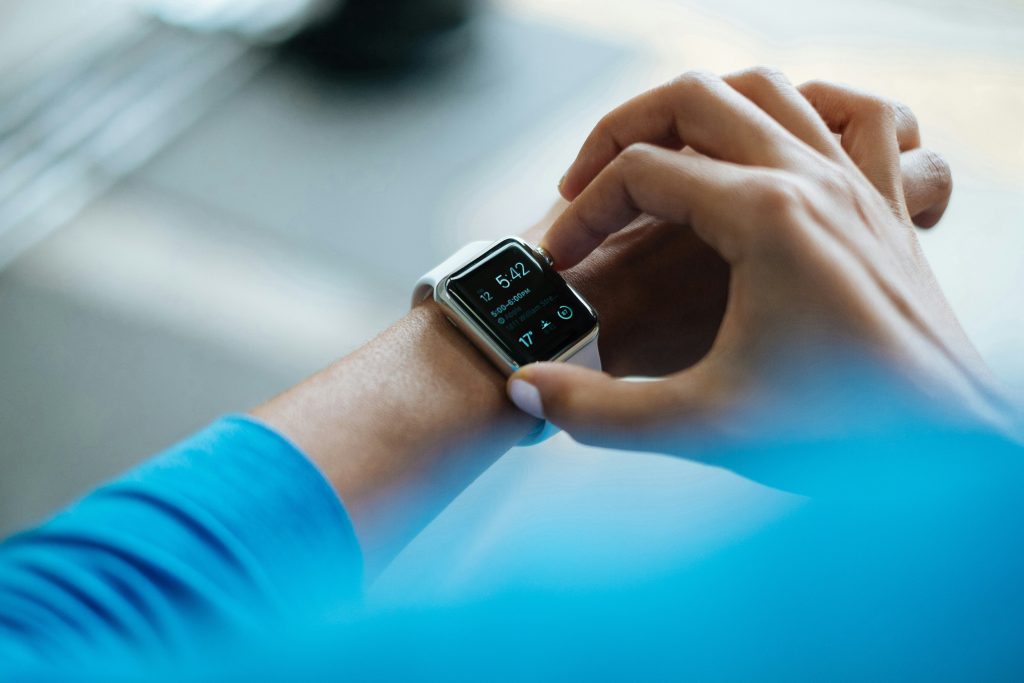
The main limitation of this study is the lack of an insomniac control group. Therefore, we cannot be certain that improvements in the outcome variables were a result of the sleep intervention itself or other reasons, which reduces the validity of the findings.
Implications for practice
One of the most important clinical implications stemming from this study is the fact that the intervention was found to be feasible when delivered by non-expert practitioners. Non-expert practitioners may refer to Graduate or APs. In this study, APs received training over 1.5 days and attended monthly sleep-specific supervision groups held by clinical leads. Furthermore, two APs were employed specifically on this project. It is likely that delivering the intervention in this way made it easier to provide a clear focused intervention to young people with clear, complex needs (Rollinson et al., 2021), ultimately maximising the potential to improve sleep and mental health outcomes.
This study highlights a clear need to target young people’s sleep in a youth mental health setting. The intervention itself is particularly scalable as it was delivered by non-expert practitioners , and service users had the option of completing the intervention remotely (via videocall or phone). It also was rolled out across 10 youth mental health service teams and delivered to populations which often present with a range of severe and complex mental health presentations and who usually present with a significant degree of risk in their presentation. Therefore, the transdiagnostic nature of a sleep intervention, alongside the use of a non-expert practitioner, widens the potential for rolling out this intervention on a larger scale.
More broadly, these findings emphasise the importance of tackling sleep issues first in those that enter secondary care. Prior work shows that sleep difficulties are an important and transdiagnostic moderator of mental ill-health (Freeman et al., 2020). Moreover, a lack of sleep and higher self-reported levels of sleepiness reduces motivation to engage in physical and social activities that increase quality of life and buffer against mental health problems (Axelsson et al., 2019), likely also impairing an individual’s willingness to engage with mental health interventions. As sleep interventions have been shown to improve not only sleep problems, but also alleviate mental health symptoms (Scott et al., 2021), this further emphasises the importance of ensuring sleep interventions are available as a first-line treatment in secondary care settings.
Alongside combining objective and subjective sleep outcome measures and examining broader mental health outcomes, future studies should continue to explore the prevalence of sleep difficulties in this population and how they relate to presentation, risk and service use to further adapt and personalise sleep interventions to provide the best outcomes.
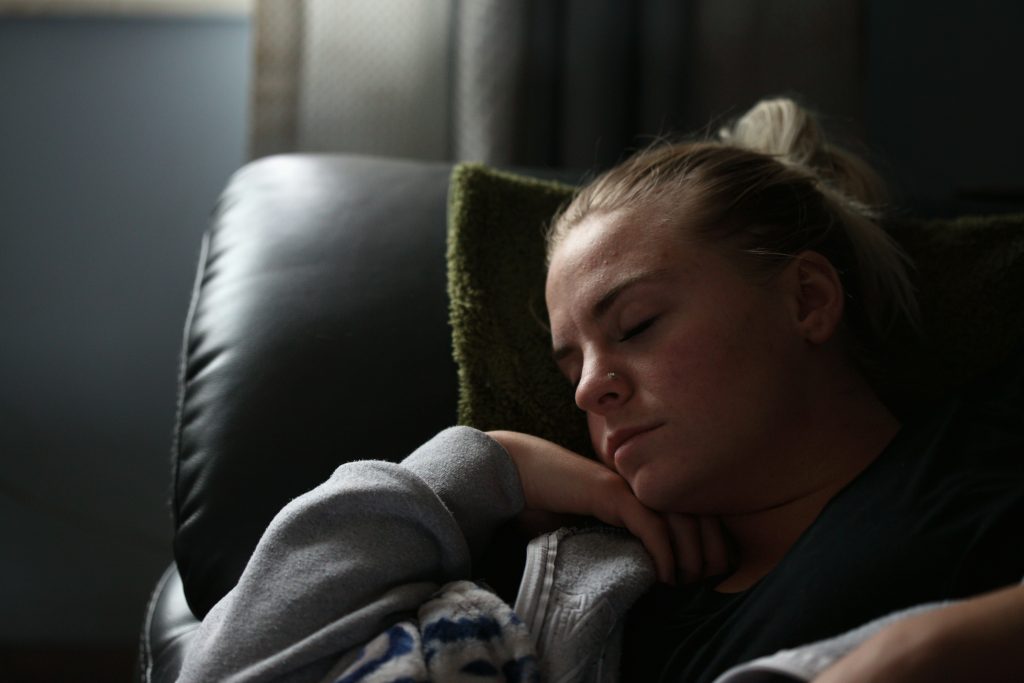
Future studies should focus on combining objective and subjective outcome measures (e.g., using wearables to track sleep) and examining broader mental health outcomes such as symptoms of suicidality and psychosis in adolescent populations.
Statement of interests
None to report.
Links
Primary paper
Rollinson, R., Cole, A., Gee, B., Tofan, I., Graham, A., Hatton, J., Lyons, J., Reeve, S., Wilson, J., Beardsworth, K., & Clarke, T. (2024). Delivering a sleep intervention across a youth mental health service using non-expert practitioners: A service evaluation. Early Intervention in Psychiatry.
Other references
Axelsson, J., Ingre, M., Kecklund, G., Lekander, M., Wright Jr, K. P., & Sundelin, T. (2020). Sleepiness as motivation: a potential mechanism for how sleep deprivation affects behavior. Sleep, 43(6), zsz291.
Barton, J. (2018). Can eCBTi improve adolescents’ sleep? The Mental Elf.
Buysse, D. J., Hall, M. L., Strollo, P. J., Kamarck, T. W., Owens, J., Lee, L., Reis, S. E., & Matthews, K. A. (2008). Relationships Between the Pittsburgh Sleep Quality Index (PSQI), Epworth Sleepiness Scale (ESS), and Clinical/Polysomnographic Measures in a Community Sample. Journal of Clinical Sleep Medicine, 04(06), 563–571.
Chung, K. F., Kan, K. K. K., & Yeung, W. F. (2011). Assessing insomnia in adolescents: comparison of insomnia severity index, Athens insomnia scale and sleep quality index. Sleep Medicine, 12(5), 463-470.
Freeman, D., Sheaves, B., Waite, F., Harvey, A. G., & Harrison, P. J. (2020). Sleep disturbance and psychiatric disorders. The Lancet Psychiatry, 7(7), 628-637.
Grandner, M. A., Williams, N. J., Knutson, K. L., Roberts, D., & Jean-Louis, G. (2016). Sleep disparity, race/ethnicity, and socioeconomic position. Sleep Medicine, 18, 7-18.
Goines, K. B., LoPilato, A. M., Addington, J., Bearden, C. E., Cadenhead, K. S., Cannon, T. D., … & Walker, E. F. (2019). Sleep problems and attenuated psychotic symptoms in youth at clinical high-risk for psychosis. Psychiatry Research, 282, 112492.
Liu, X. (2004). Sleep and adolescent suicidal behavior. Sleep, 27(7), 1351-1358.
Morin, C. M., Belleville, G., Bélanger, L., & Ivers, H. (2011). The Insomnia Severity Index: psychometric indicators to detect insomnia cases and evaluate treatment response. Sleep, 34(5), 601-608.
National Institute of Health and Care Excellence. (2021). Insomnia.
Orchard, F., Pass, L., Marshall, T., & Reynolds, S. (2017). Clinical characteristics of adolescents referred for treatment of depressive disorders. Child and Adolescent Mental Health, 22(2), 61-68.
Rollinson, R., Price, I., Gee, B., Lyons, J., Carroll, B., Wilson, J., & Clarke, T. (2021). Low-intensity sleep intervention in a youth mental health service: A case series analysis. Behavioural and Cognitive Psychotherapy, 49(1), 62–75.
Scott, A. J., Webb, T. L., Martyn-St James, M., Rowse, G., & Weich, S. (2021). Improving sleep quality leads to better mental health: A meta-analysis of randomised controlled trials. Sleep Medicine Reviews, 60, 101556.
Photo credits
- Photo by Annie Spratt on Unsplash
- Photo by Lukas Blazek on Unsplash
- Photo by Slaapwijsheid on Unsplash
- Photo by Christopher Jolly on Unsplash
- Photo by lukechesser on Unsplash
- Photo by Alexander Grey on Unsplash

Great review – very well written and informative.
I think there may be a typo – did you mean 95% rather than 5% were white, in your final section under study strengths and limitations?
Thanks Linda, we’ve corrected that typo in the limitations section. It is 92.5% white.